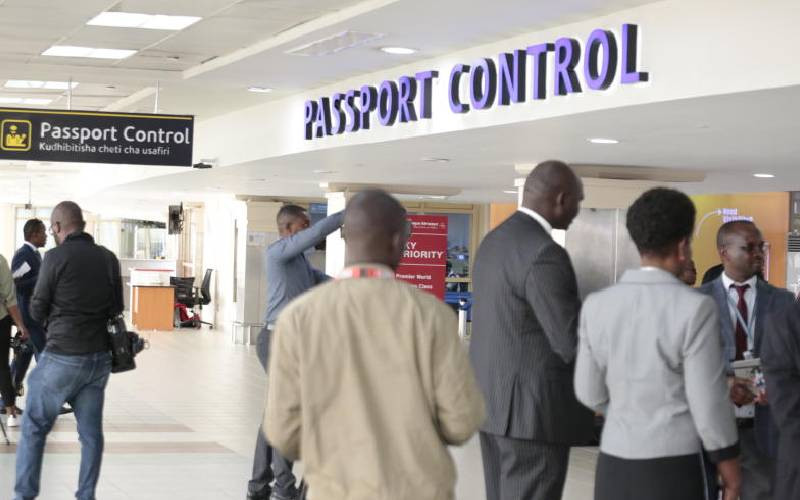A generation ago, the Chinese Silk Road would have seemed to most people a little more than a fascinating episode in history.
It may have been the route through which goods, people and ideas flowed between East and West for many centuries, but its relevance to the modern world started fading.
After all, it was a time when the US, Japan and Europe were still regarded as the motors of the global economy.
It was maritime and air routes that were seen as the future. It was also why Asia, parts of Europe and Africa were seen as peripheral to the future.
Perceptions today are very different. The world demands for a community of common destiny pushing for the development of a common interest.
And it is against this background that China has come up with the one belt, one road (OBOR) development initiative viewed as the most important economic event of the 21st century. The 21st century maritime silk road is the brain child of the current Chinese President Xi Jinping. It is aimed at fostering collaboration along the historic Silk Road and maritime routes.
The belt and road routes cut through Asia, Europe, and Africa, connecting the vibrant east Asia economic circle at one end and developed European economic circle at the other.
The OBOR strategy, a key policy of Mr Xi’s administration, aims at boosting connectivity and commerce between China and 65 countries with a total population of 4.4 billion by building infrastructure and boosting financial and trade ties.
Respect and tolerance
Kenya is part of the countries this development initiative will pass through given its strategic position in world affairs.
The 12th National Committee of the Chinese People’s Political Consultative Conference Chairman Wang Jiarui said the participating countries should see it as being able to forge one common destiny through inclusivity.
He said: “This is not meant to come up with a new world order but push for development for all countries that are part of the initiative.”
The emphasis on the implementation of the project is on the concept of the three no’s, which include non-interference in the internal affairs of other nations; second, that China does not seek to increase sphere of influence and that the country does not strive for hegemony or dominance.
“The initiative is harmonious and inclusive. It advocates tolerance among civilisations, respects the paths and modes of development chosen by different countries and supports dialogue among different civilisations on the principles of seeking common ground while shelving differences and drawing on each other’s strengths,” Mr Jiarui said.
Speaking while addressing media representatives from 60 countries gathered at a forum in Beijing on Monday to discuss the project, Jiarui said once the OBOR vision is realised, it would create the most promising economic corridor, directly benefiting a population of 4.4 billion people with a collective gross domestic product of $2.1 trillion (Sh217 trillion) that accounts for 29 per cent of the world’s wealth.
Stay informed. Subscribe to our newsletter
According to the blue print of the project issued by China’s National Development and Reform Commission, Foreign Affairs ministry and that of Commerce, the initiative is in line with the United Nations charter.
The blue print shows that it upholds five principles of peaceful coexistence which include mutual respect for each other’s sovereignty and territorial integrity, mutual non-aggression, mutual non-interference in each other’s internal affairs, equality and mutual benefit.
“The connectivity projects of the initiative will help align and co-ordinate the development strategies of the countries, tap market potential in the region, promote investment and consumption, create demand and job opportunities, enhance people-to-people and cultural exchanges and mutual learning and enable them understand, trust and respect each other and live in harmony, peace and prosperity,” the blue print partly reads.
Liu Yunshan, a senior official of the Communist Party of China (CPC), while meeting with foreign delegates attending the forum on media co-operation along the Silk Road economic belt called for closer media co-operation among the countries along the belt and road.
Comparing the media to a bridge connecting people from different countries, Mr Yunshan hoped the Press would increase exchanges and co-operation to inject positive energy into the project.
Yunshan, a member of the Standing Committee of the Political Bureau of the CPC Central Committee, said the belt and road are more like a chorus by all countries along the route than a solo by China, which will provide opportunities for the whole world.
Zhang Jianxing, the Vice President of People’s Daily (China’s largest newspaper) said OBOR accommodates the interests and concerns of all parties involved and seeks a conjunction of interests of all parties involved as China champions a common destiny initiative. “It will open up the region and promote the spirit of tolerance as a community of common destiny is formed,” he said.
Chinese companies in provinces that OBOR initiative will pass through are also gearing up for new business opportunities.
China Everbright Group Chairman Tang Shuangning, who was among those who addressed the Media Co-operation Forum on OBOR at the China National Convention Centre in Beijing, said companies were upbeat on the prospects of the initiative when complete.
Spark scepticism
However, there are those who fear that Beijing wants to create China-centred infrastructure networks to expand its own economic and political influence in the world and especially in Europe and Asia.
India Press Trust Executive Editor Chandrasekar Vanakambadi said the initiative may be viewed as China’s attempt to up its grip on security in the region and not what it is promoting in words. “Indians are very apprehensive on the initiative given the military operations and territorial disputes China is involved in with most of its neighbours,” Mr Vanakambadi said.
This apprehension is further shared by Moritz Rudolf, a research associate at the Mercator Institute for China Studies, who argues that while China’s president promises a win-win situation, OBOR represents an economic step backwards.
“Instead of placing more emphasis on domestic demand, Beijing is speculating on new export markets. OBOR remains a speculative bubble,” Rudolf said adding that the biggest winner of the initiative would be China.
“This is because Beijing is the project’s architect, financier and builder. The suspicion towards OBOR is also fuelled by China’s increasingly aggressive foreign policy. By following a more assertive approach in the South China Sea territorial disputes or more recently by displaying modern military hardware during the World War II commemoration military parade in Beijing, the Chinese leadership risks losing the very thing it most needs from neighbouring countries to make OBOR a reality-trust,” he said.
Yang Zhenwu, president of the People’s Daily (the official paper of the CPC), called on the media to play its part by removing misunderstanding and doubt of the initiative.
Representatives from media organisations in countries along the Silk Road included participants from Kenya, Zambia, South Africa, Zimbabwe, Tanzania, Egypt, Sudan, Indonesia, India, Argentina, Spain, Mexico and Pakistan.
 The Standard Group Plc is a
multi-media organization with investments in media platforms spanning newspaper
print operations, television, radio broadcasting, digital and online services. The
Standard Group is recognized as a leading multi-media house in Kenya with a key
influence in matters of national and international interest.
The Standard Group Plc is a
multi-media organization with investments in media platforms spanning newspaper
print operations, television, radio broadcasting, digital and online services. The
Standard Group is recognized as a leading multi-media house in Kenya with a key
influence in matters of national and international interest.
 The Standard Group Plc is a
multi-media organization with investments in media platforms spanning newspaper
print operations, television, radio broadcasting, digital and online services. The
Standard Group is recognized as a leading multi-media house in Kenya with a key
influence in matters of national and international interest.
The Standard Group Plc is a
multi-media organization with investments in media platforms spanning newspaper
print operations, television, radio broadcasting, digital and online services. The
Standard Group is recognized as a leading multi-media house in Kenya with a key
influence in matters of national and international interest.




